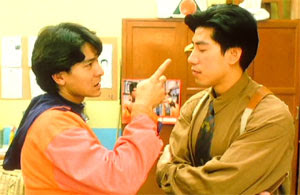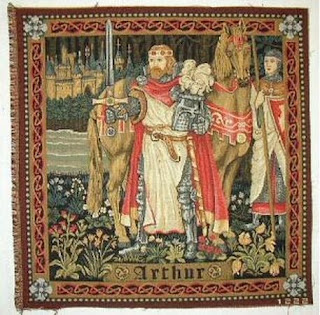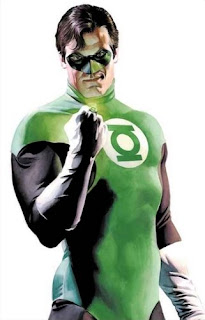.jpg)
SPOILERS ABOUND!!!!
You know, the new Trek movie is pretty much like MI:3.
When that came out, the reviews were largely positive. Now, it's all but forgotten.
It had a gripping opening scene - just as Trek does.
But the intensity of that opening scene is never matched again - just as in MI:3.
Here are some things the new Trek isn't:
- boring
- badly acted
- emotionally engaging
- thought-provoking
- exciting
When I say the film isn't exciting, that doesn't mean there's no action (there is) or spectacle (there is - though not as much as the opening scene suggests there will be). There is. But there's nothing - literally nothing - we haven't seen before, and done better.
There are many problems with the script of the film. Orci and Kurtzmann got a geek's dream job - play in the Trek universe, without having to stick too much to established rules - and they turned it into a workmanlike piece. An assembly-line summer movie, without any of the aspects which made Star Trek different from other science fiction franchises.
(To be fair, most of the previous Trek films haven't been able to achieve this either. For some reason, Trek's strongest points seem very hard to translate to the big screen).
So, what are these problems?
1) Predictability. There's a ton of really predictable moments and scenes in this film. For instance, Scotty beams Kirk and Spock into the Romulan vessel, into an area he supposes is a storage hold, so they should be safe when they arrive.
Guess what happens???
That's right, they are surrounded by Romulans when they arrive and immediately have to get into a firefight.
When Kirk and Sulu go to stop the Romulan drill, Sulu, who has claimed to be an advanced hand-to-hand combat expert, is asked by Kirk what his style is. 'Fencing', Sulu answers in a guilty tone of voice. So what happens when they get into a fight with the Romulan soldiers on the drill???
That's right, Sulu's fencing ability saves the day. He even has an impressive-looking retractable sword with him. So why didn't he mention that before? Because the writers and director wanted to achieve an effect.
All through the film, we get these little snippets and situations which have been done to death. I'm not asking for a Nouvelle Vague or a Jim Jarmusch approach - just an attempt, at least, to avoid clichés once in a while?
2) Pointless 'excitement': when Kirk and Scotty beam aboard the Enterprise surreptitously, Scotty ends up in a water tube and Kirk has to get him out. This takes up a few minutes of screen time. Is this why we're watching Trek films? To see Scotty in a comedy danger sequence without any point or sense of danger?
Kirk gets to hang from ledges in several fight sequences (he also never wins a single hand-to-hand fight in the film). We KNOW he's not going to fall, and he doesn't. So why keep on using this old, tired gambit if you're not going to do something new and surprising with it (as, for instance, in In The Line Of Fire)?
3) Plot Holes the size of Supernovas.
Nero, the Romulan miner, witnesses the death of the planet Romulus in the future (because of a supernova) and decides that Spock is responsible (he was on his way with a 'cure' for the supernova but got there just too late). So what does he do when he arrives in the past? He's going to kill Spock and destroy every planet in the federation. Only it takes 25 years for Spock to arrive in the past.
What would you do if you were Nero?
That's right, you'd hang around for 25 years doing absolutely nothing. But you'd still be as angry and insanely obsessed as you were on the very first day you arrived here. (Oh, you wouldn't have gone to the Romulan Empire to tell them your tale of woe and enlist their aid in your quest for vengeance either.)
Never mind that Nero could have destroyed the entire Federation by the time Spock got to the present of the film...
And why is Nero going to destroy the Federation?
Well, because... because... just because he can. Sure, he gives some sort of explanation but it's totally inconsequential.

4) Lack of emotional impact.
Nero kills Kirk's dad, destroys Vulcan and causes the death of Spock's mother, before his very eyes.
And, you know... who cares? You'd think this would give the writers powerful material for scenes of almost Shakesperean intensity. But while these elements get touched on, they just don't resonate. Primarily because the characters of Kirk and Spock aren't given emotional moments where we can empathize with their loss. There isn't even a 'How can you be so cold and unfeeling? Your mother died, you green-blooded freak!' 'Grief is highly illogical'-type of exchange.
Just compare the scenes in The Search For Spock where Kirk learns the Klingon villain has killed his son. There, the death counts for something.
And it's not just in the personal relationships that emotional resonance is missing.
Vulcan, one of the mainstays of Trek lore is destroyed by Nero. It gets a nice special effect shot - but how about making this a sequence? How about showing everyday Vulcans suddenly faced with their world literally collapsing in on them? This is a tragedy on an epic scale, but we see almost nothing of it. Worse, what we have seen of the Vulcans makes them utterly unlikeable. So we don't even care about this planetary catastrophe.
5) Lack of internal logic and consistency.
I've already given the Sulu example earlier.
Scotty is turned into an utter buffoon. Why would anyone want him aboard their spaceship?
Same thing with Checkov - far too young and klutzy. The secondary characters have a bit more face time than in the original series - but instead of deepening the characters (so they are more like the cast of The Next Generation, a group of equally interesting individuals) they are turned into comedy caricatures.
With the exception of Uhura, who is not turned into a joke. But apart from translating one important message and being Spock's main squeeze, she still doesn't get to do anything of note in the film.
Young Spock is challenged on Vulcan by a trio of bullies for the 35th time, who want to get an emotional response from him. So they insult his mother and father. Spock immediately attacks them.
Why does this not make sense?
- this is the 35th time they bother Spock, and only now do they get the bright idea of insulting his mother and father???
- Disliking Spock because of his race is racist, and illogical - and is an emotional response. Yet no one seems to realize or notice this.
So what makes the Vulcans interesting - their logical reactions which differ from our 'normal'emotional ones - is handled in a completely wrong way.
I guess that's enough examples (though the awfulness of Old Spock's expositionary monologue should be mentioned as well. A perfect example of how NOT to do it).
One thing I did like about the film is that we finally get to see some huge alien monsters on a planet - about time too. Though why the biggest monster spends all of its screen time blowing hot air into Kirk's face instead of just eating him is another mystery.
Now, some online screenwriting master gurus have bemoaned the fact that this film isn't about anything. I think that's not the right way to put it. The film IS about something: revenge. Kirk wants revenge for his dead dad, Spock gets a reason for revenge, Nero is motivated solely by a (misplaced) desire for revenge.
What you DON'T get, is a look at what revenge does to a person. The theme is there, it's just not examined in any way.
In closing, for all the people and critics who like the film, I would like to ask one question:
- If this were the launch of Star Trek instead of a reboot, would the franchise take off on the strength of this film alone?
I don't know about you, but I'm very sure about my answer.





















